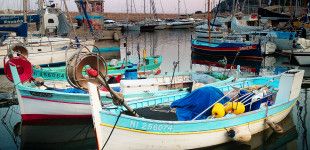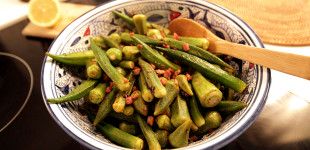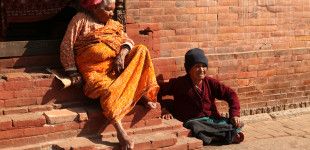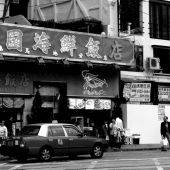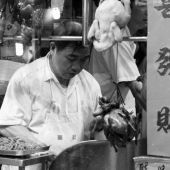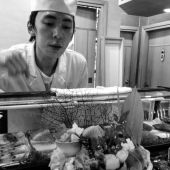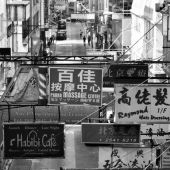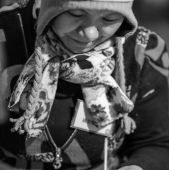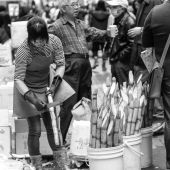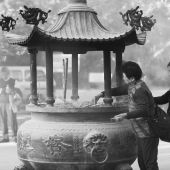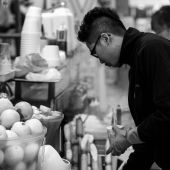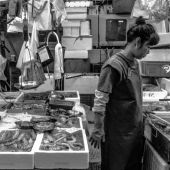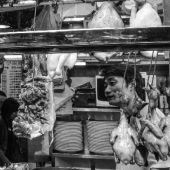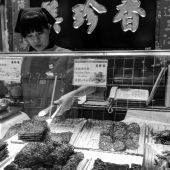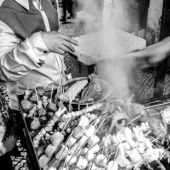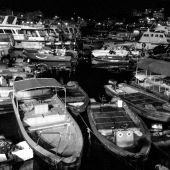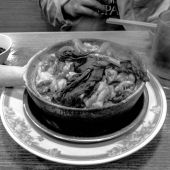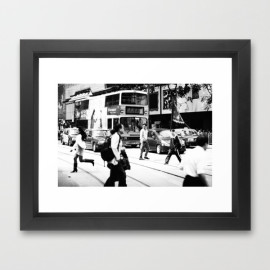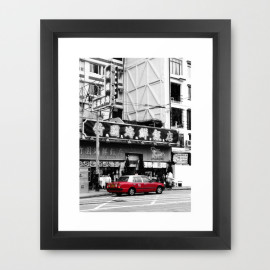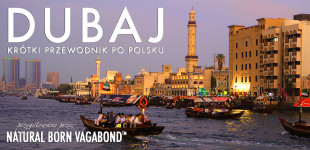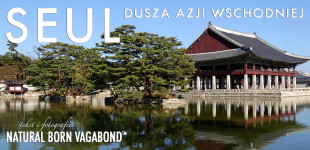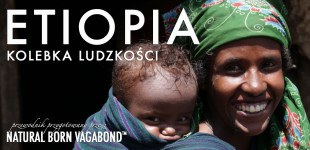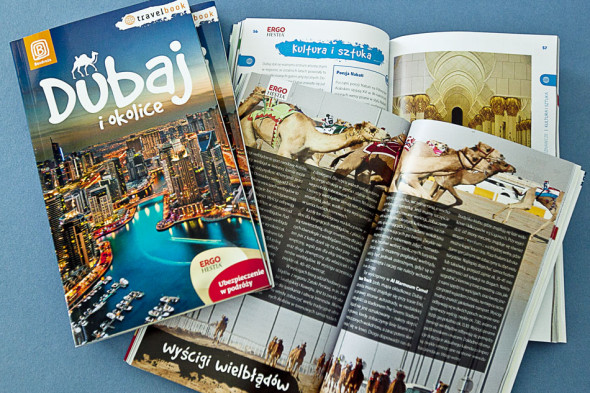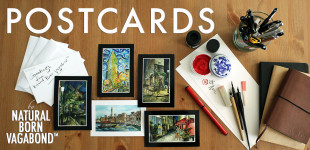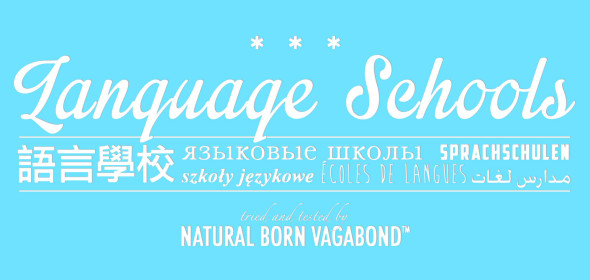Welcome travelers!
Natural Born Vagabond™ is a bilingual (English and Polish) site devoted to travel photography and journalism. Here you can find images and articles from our remote travels. The ambition of the creators is to share the best stories with those who crave wilderness and adventure. If you would like to share your opinions or travel stories please contact us via e-mail.
Featured
Natural Born Vagabond™
101 reasons to fall in love with Hong Kong
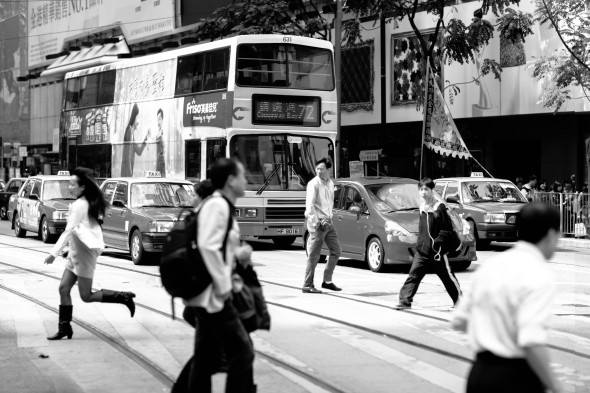
I got very excited when I heard that our trip to Hong Kong (February 2013) would coincide with the Chinese New Year. I had hopes of seeing all the best of the celebration and to enjoy strolling through festive crowds on the streets of the city whose Chinese name means “fragrant harbour” and is the world’s entrepôt to China. The city did live up to my (high) expectations and I realised early in the trip that one visit would not be enough. Hong Kong is one of those cities you bond with at first contact. The city has an amazing vibe on par with New York and London, and an east-west culture unrivaled in the world.
Living in the Middle East for over a year, and travelling quite a bit in the region, I grew accustomed to sticking out like a sore thumb whenever I travelled. On most plane rides in my travels from Dubai, I am the only white women on board — and a blond haired, blue eyed one at that! Long glares from the typically Arab or South Asian crowds on my travels is something that I hardly notice anymore. But in Hong Kong I regained my anonymity, even in a setting where 99 per cent of the faces are East Asian, and where my husband — of Cantonese descent — and I form the rarest of mixed couples (AMWF)! Anyhow, it was refreshing to be in a place where people’s attention are focused on living life to its fullest, rather than on us. Hong Kong has a great balance of cultural heritage and business opportunities that makes it not only a crossroads of east and west, but also of ancient and modern, and business and pleasure.
Food culture is not to be forgotten
They say that Hong Kong is a foodie’s paradise with its abundance of restaurants of all types, the emphasis on freshness and variety of ingredients, and a culture where food takes centre stage. We discovered that the former British colony is indeed a gastronomic Eden. In Hong Kong high-end restaurants are a plenty, combining the best of east and west. On the other end of the spectrum are roadside open-air stalls known as dai pai dongs that serve equally good — and some would argue tastier — food for a fraction of the price and set within a priceless backdrop of Hong Kong’s back streets. Unfortunately, the dai pai dongs are increasingly disappearing from Hong Kong Island, although they remain a fixture in Kowloon. In these open-air restaurants abound items such as frog leg casserole, fresh seafood made to order and “exotic” skewers of pork intestines, squid and fish balls. And countless yum cha eateries, both in upscale and downmarket locations, will simply overwhelm you with a choice of fantastic shrimp dumplings, chicken feet, braised pork, etc. and which make you realise that Hong Kong is the Mecca for dim sum.
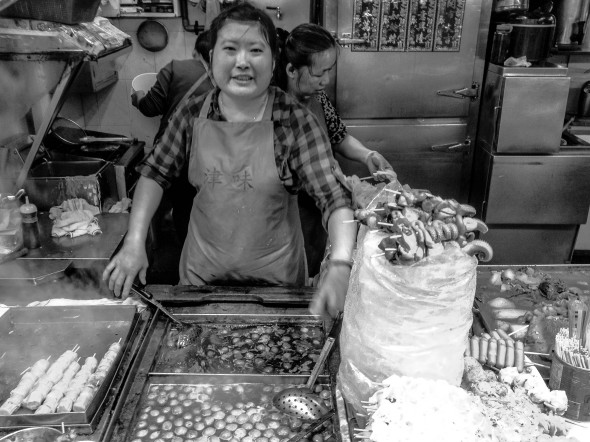
Michelin-rated restaurants are aplenty in the city, many offering world-class quality on a budget! One such place is Tim Ho Wan, a dim sum eatery in the International Financial Centre (IFC) which has the best cha siu bao (叉燒包 – pork buns) we have ever tried — and between myself and Kai, we’ve tried many. Another of our favourite Michelin-rated restaurant is a fantastic Vietnamese restaurant infused with French influence, Nha Trang, located in Kowloon’s Tsim Sha Tsui district (there are also other locations) and with a spectacular view of Victoria Harbour and the skyscrapers of Central. The suckling pig at Nha Trang was one of the most delectable dishes we have ever tried that we ordered multiple servings. For us, the suckling pig was like manna from heaven given that pork is not as abundant in Dubai, and when it is to be found, usually expensive without a commiserate level of quality.
But my most memorable dish in Hong Kong was to be found in a 120-year-old snake restaurant, Ser Wong Fun, in the Mid-levels of Hong Kong Island. Our snake adventure started with the signature soup of the restaurant, followed by a stir fried snake with Chinese vegetables. According to the friend that took us here, it is “the place” if you are craving reptile. My snake-eating adventure also introduced me to one of the principals of Chinese culture. According to the yin–yang principals of foods, snake is considered “heaty” meaning that it warms up the body and is ideal to have in the colder months. (The converse are items which are deemed to be “cool”.) I was thus warned of the “heatyness” of snake and cautioned to not have too much, lest my body temperature rise too much. But I just could not help myself and, like a goldfish, ate all the portions placed in front of me! After the meal, I ended up walking in a t-shirt, sweating profusely, in the cool February air, while everyone else in the city wore their jackets. This is how my body reacted to the excessive amounts of snake meat. But I have no regrets about my avaricious snake experience and I now find myself craving it whenever the air is cool! Furthermore, my snake feast was the perfect way to celebrate the Chinese New Year 2013 as it happened to be the year of the snake!
Walking through the back streets of Sheung Wan — or most part of Hong Kong for that matter — one will see tiny culinary gems hidden amongst famous wet markets. For those whose palettes are less adventurous — though I would recommend having an open mind — Hong Kong poses no challenge to the finicky (or bland) eater. Western foods are almost equally popular as Asian cuisine. And European fare is often served with finesse and a touch of the old world charm, conjuring up nostalgia of the days when Hong Kong was a British colony. One such place was to be found perched on the second floor of a nondescript building (whose entrance was just as nondescript) just off of one of Hong Kong’s ubiquitous markets built alongside one of the many staircases that scale the hills of Central. There we were transported to another time and place as the mix of European and Chinese staff served us Belgian beer and and mussels, above the bustle of markets below us.
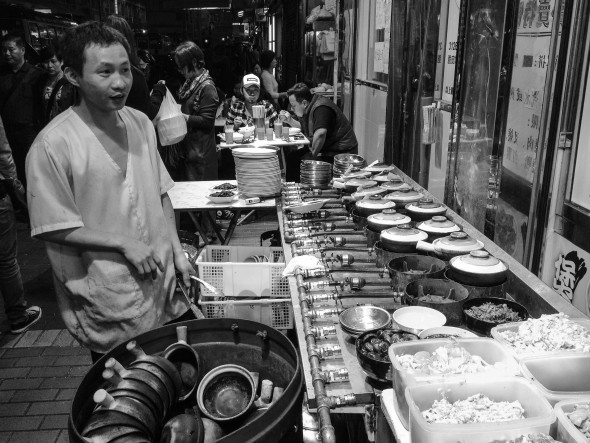
Long live the street markets of Hong Kong!
Unfortunately, the once ubiquitous street stalls dishing up Cantonese cuisine — hawking everything from barbecued meats, to traditional soups, to meat skewers and all things in between — are disappearing quickly from Hong Kong Island, a victim of the ever-increasing rents that surpass even the heights of the city’s skyscrapers. Local regulations are also not in their favour as licences for the street stalls are tied to the current owner and can neither be sold nor bequeathed to the next generation.
Having fun in HK is not prohibited
One of the most intriguing and unusual sights in Hong Kong is that of Filipina labourers hanging out in their “cardboard villas” on their days off (Sundays and public holidays). The Filipino community is one of the largest expatriate groups in Hong Kong, numbering 140 thousand, the vast majority of whom are female domestic helpers. On their “picnic” days they typically set up in the neighbourhoods of Central, Victoria Park and by the Hong Kong Cultural Centre and will stake out a location, by laying cardboard on the ground to sit, for socialising. Some go beyond simply placing cardboard on the ground to creating their own villas of cardboard, complete with walls and in some cases even roofs. In their cardboard villas they play cards, share drinks and snacks, and catch up on the lives of their friends. I was amazed at how much fun they have in their villas and the fact that local law enforcement and city laws do not harass/ban the proliferation of makeshift cardboard tents. It was a refreshing sight in a world that often overlooks the contribution of domestic labourers to the social fabric of a city.
And of course for fun the professional expatriates of Hong Kong — those typically working in finance, fashion, etc. — converge on the world renowned district of Lan Kwai Fong (LKF), where nightlife abounds and the party spills onto the steep and narrow streets of Central. In LKF the language of use is English, making it an international hot spot in the milieu of Cantonese-speaking Hong Kong.
Abundance of culture
As an artist, I paid extra attention to the city’s art scene and was impressed with the abundance of artistic energy that showed to me a sense of emergence. I reckon that the arts and cultural scene is about ready to explode, marrying the traditions of the west with a nascent Chinese arts scene where talent from China flocks given the city’s open and attractive lifestyle — something that cities in China will have a hard time matching, even as the economic gap between Hong Kong and cities in China abate. Of particular note is the area around the Mid-levels escalators, where an eclectic and multicultural mix of artisan boutiques, shops, bars and eateries made me forget that I was in the heart of East Asia. Unfortunately, with a packed schedule we only scratched the surface while exploring this area, so we promised ourselves to atone for this by making it a priority in our next trip — which will surely come sooner, rather than later!
The main attractions of Hong Kong are invariably described in all tourist guide books, so I will list only a few of the things we did and which we think are a must in any itinerary of the city:
– Seafood Street in Sai Kung. Its location next to the coast and the love for seafood of the area reminded me of Sausalito in California. Sai Kung is a bit far from Hong Kong Island and it requires a 30-40 minute minibus ride from Kowloon’s Lady Street district — but it is worth it! On Seafood Street the obligatory meal is fresh seafood, displayed live in tanks in front of the restaurants, awaiting for patrons to choose them for their meals. Short of eating the many fish, crustaceans, mollusks and other sea creatures straight from the ocean, the food is as fresh as it can get. And after the seafood feast the locals spill over into one of the many dessert houses that have become popular of late in the city. Hong Kong-style desserts are nothing like that of China and they incorporate many of the fruits endemic to the region. Although Chinese desserts are often considered sub-par, the dessert culture in Hong Kong is excellent and shares little commonality with the mainland — something that Hong Kongers also feel the same with regards to their culture and that of their northern neighbour!
– Cantonese Opera. Known colloquially as “tuk tuk chiang” to the locals, this ancient (and colourful and melodic) art form is enjoying a mini renaissance, although the days when troupes performed on Temple Street have long passed. The art is an extraordinary feast for the eyes, captured in great lens by the movie “Farewell my concubine” (1993), although that featured its sister art form of the Peking Opera. The costumes worn by the performers and the makeup on their faces makes for a spectacular sight, and in more modern settings there are even English translations displayed on screens for the audience. It is a must see event for both connoisseurs and the culturally curious!
– Antique markets. For a city that is not much more than 150 years old (Hong Kong was ceded to the British in 1842) there are numerous antique shops to be found. Of course Hong Kong’s origin pre-dates the British, but pre-1842 it was described as a “barren rock with hardly a house upon it” by Lord Palmerston. But regardless of its young age (in its modern form), the antique markets of the city are a perfect example of old and new, which are at the heart of Hong Kong culture.
– The Peak. Although the most common way to get to the Peak — a 552 metre mountain adjacent to Central — is by way of the Peak Tram, we think it is best ascended on foot on one of the many trails that start near Kennedy Town. This is admittedly a path less taken and one that requires a certain level of fitness, but the trails are well maintained and they offer glorious views that one can take in leisurely. The view from the Peak is unrivalled in offering a panoramic view of the world’s most famous harbour.
– Escalator stroll. The Mid-level escalators of Hong Kong Island — the longest outdoor covered escalators (spanning 800 metres and rising 135 metres) — is well known for its lively vibe. Like the changing vegetation on a mountain with increasing altitude, so too are the escalators characterised by a different scene at each level of the dozen or so outdoor stairs that snake up the mountainside of Central. One of the great traditions for those living in the Mid-levels district is to do an “escalator bar crawl” on their way home up the mountain. (The escalators travel down from 6 AM to 10 AM and up from 10:30 AM to midnight.) Of course, stopping for a drink at the end of each set of steps might not be feasible for those living near the top (Conduit Road).
– Trip to Macau. In a span of just a decade Macau transformed from a provincial gambling outpost into the world’s leading leading city for high rollers, with gaming revenues higher than in Las Vegas. Like the city of Hong Kong, which retains its own laws and customs after its handover back to China, Macau is likewise a special administrative region (SAR) and retains its Portuguese culture post 1999, when its sovereignty was reverted back to Chinese rule. Besides the obvious attraction of gambling, Macau is a favourite spot for foodies who go there to enjoy Macanese cuisine — a hybrid of the Cantonese and Portuguese kitchens. There is regular ferry service to shuttle punters from Hong Kong to Macau, but the ferry’s monopoly service to Hong Kong will soon end as a permanent fixed link (bridge) connecting the two (along with the city of Zhuhai) is set for completion in 2015.
– The Big Bronze Buddha. Located on Lantau Island, visitors were previously obligated to take one of the city’s many ferry routes to reach the world’s largest outdoor bronze Buddha. However, we got to the Big Buddha by way of a newly set up gondola service, some of which feature a glass (“crystal”) bottom to allow the passengers to see the ocean hundreds of metres below them. Nevertheless, some visitors opt for trekking the curvy hills that lead to the statue. Notwithstanding religious reasons the cable car ride is worth the trip, and for those wishing to bypass the queue the crystal-bottom gondolas — which cost more than the regular gondolas — are well worth the extra money to cut the wait time. But there are no means to escape the final burden of climbing the 240 stairs that lead from the base of to the Buddha — but the climb is well worth it as the view from the top is a luscious green, a quality that is remarkably understated about Hong Kong’s environs.
Big thanks to our dear friends and Kai’s family for hosting us and showing us around. This stay would not be the same without you!
Preparing the gallery below I decided to go for black-and-white photographs only. I wanted it to show a glimpse of everyday life in HK. But nothing will substitute your own experience in this marvelous city. So book your flight!
Articles worth checking:
– Hong Kong’s best secret shops – Time Out Hong Kong
Photography by Dominika D. Framed gallery quality art prints on acid free archival paper are available for purchase online. Click on the image below to check possible options:


